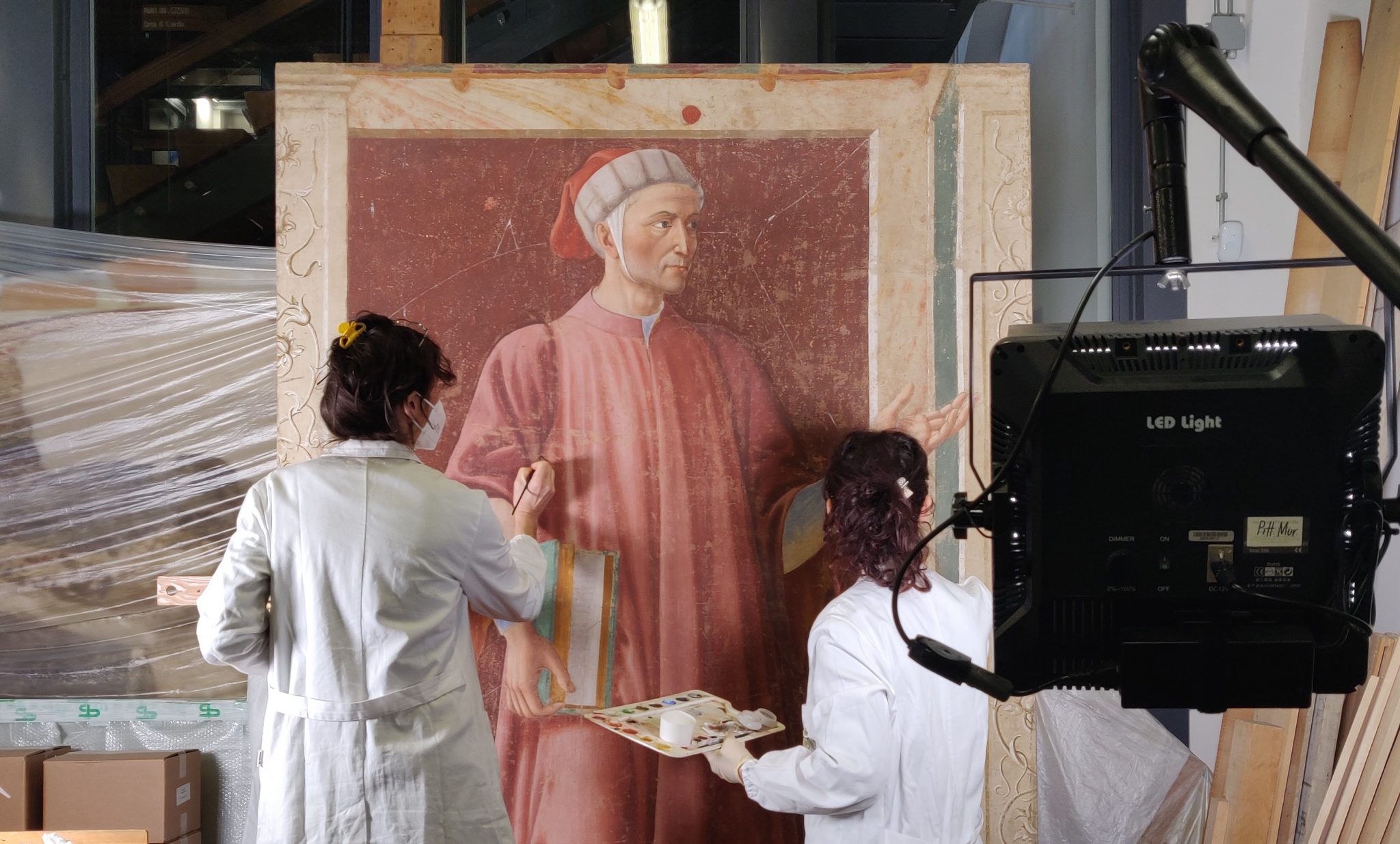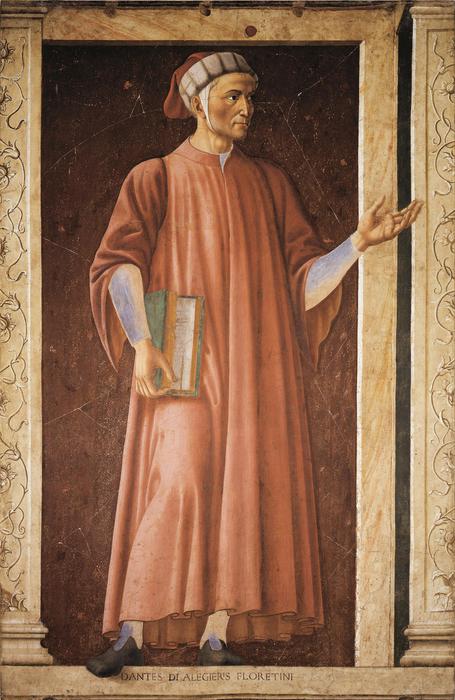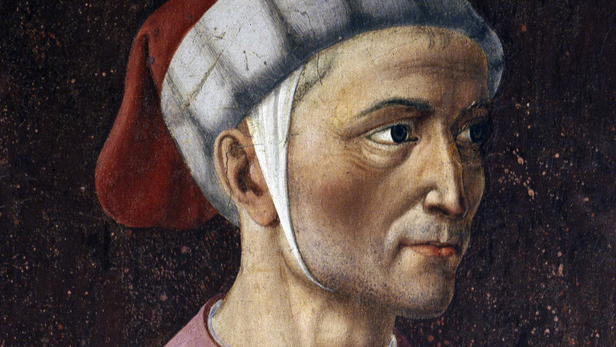In this the 700th anniversary of Dante Alighieri’s death, I’ve been trying to have some extra posts on the great Italian poet, who is so important to this blog that I have a link up in the header summarizing all my blog posts on Dante. It seems that Italians all across Italy have been doing special things in commemoration of the anniversary, and one of them is a restoration of a famous 15th century portrait of Dante. The Italian Tribune, a weekly publication in the United States for Italian-Americans since 1931, published “15th Century Portrait of Dante Restored,” noting the restoration and unveiling of the painting:
The 15th century fresco of Dante Alighieri was nearly lost forever
when it was whitewashed over, only to be rediscovered hundreds of years later.
It was scratched and darkened with grime, but after a six-month restoration,
the famous portrait of Dante has been returned to its original luster, just in
time for the 700th anniversary of the poet’s death.
The newly restored portrait, which is eight feet high by five feet
wide and was painted by Renaissance artist Andrea del Castagno, was unveiled
last week [March 2021] at the Uffizi Galleries in Florence, Italy. It depicts
the author of The Divine Comedy, considered to be the greatest work of
literature, dressed in a cloak and a red cap, his gaze intent and his nose
aquiline. “This is perhaps the most famous image of Dante, an icon of Italian
culture,” said Eike Schmidt, the director of the art gallery. “He’s an
important figure not just for Italy but for the whole world.”
The restorers of the Opificio delle Pietre Dure, a long-established
cultural heritage institution in Florence, restored the portrait to its
original color, removing sediments and pictorial retouches that had darkened
the colors. An unprecedented image emerged. Having looked melancholy and dour
before the restoration, Dante’s face is once again bright and animated and more
youthful.
The restoration:
Andrea del Castagno only lived about 38 years (1419-57)
but was a very influential painter. Perhaps his most well-known works are
a Last Supper, an Assumption of the Virgin, a Crucifixion, a young King David
with Goliath’s head, and nine frescoes of famous men and women, many of them Florentines,
of which this Dante is included. From the Itaian-Tribune article:
The detached fresco was originally located in Villa Pandolfini near
Florence and was one of nine famous figures painted by del Castagno on the
walls of the villa between 1447 and 1449. The paintings included three
condottieri, military commanders who led bands of mercenaries during the High
Middle Ages and Early Renaissance, as well as three illustrious women and the
three most famous poets of the age, Dante, Petrarch and Boccaccio.
All three poets are delineated in full length wearing
long gowns, with head coverings, and holding a book. The book is an
obvious emblematic attribute to their literary identity but I don’t know what
the long gowns and the head coverings symbolize, if anything. What’s
interesting is in the color of the gowns and the type of head coverings.
Dante is portrayed in red with a Santa type of cap. Boccaccio is in white
and a kerchief type of bandana, which Petrarch is in an orange-brown gown with
a capuchin.
First, here is the entire fresco of Dante.
Here are the Boccaccio
and Petrarch portraits as a comparison.
What I find most interesting is that Dante’s facial demeanor is delineated not in an angry or perturbed manner as so many have, but rather congenial. Here is a detail of his face.
Also interesting is the hair sticking out from under the cap is grey. I would think it’s unlikely that is the actual face of Dante since this was painted about 130 years after his death, but it does seem like it could be him.
Here is a lovely just
over four minute video clip with no words and just overlaid music displaying the
art of Andrea del Castagno.
Boccaccio comes in at the 1:18 mark, Petrarch at the 1:29 mark. You can see the gallery of the nine frescos as they were intended to be displayed at the 2:24 mark. Dante first comes in at the 3:00 mark and then a detail of the face comes in at 3:20.
I love Renaissance
art. It’s my favorite period.






No comments:
Post a Comment